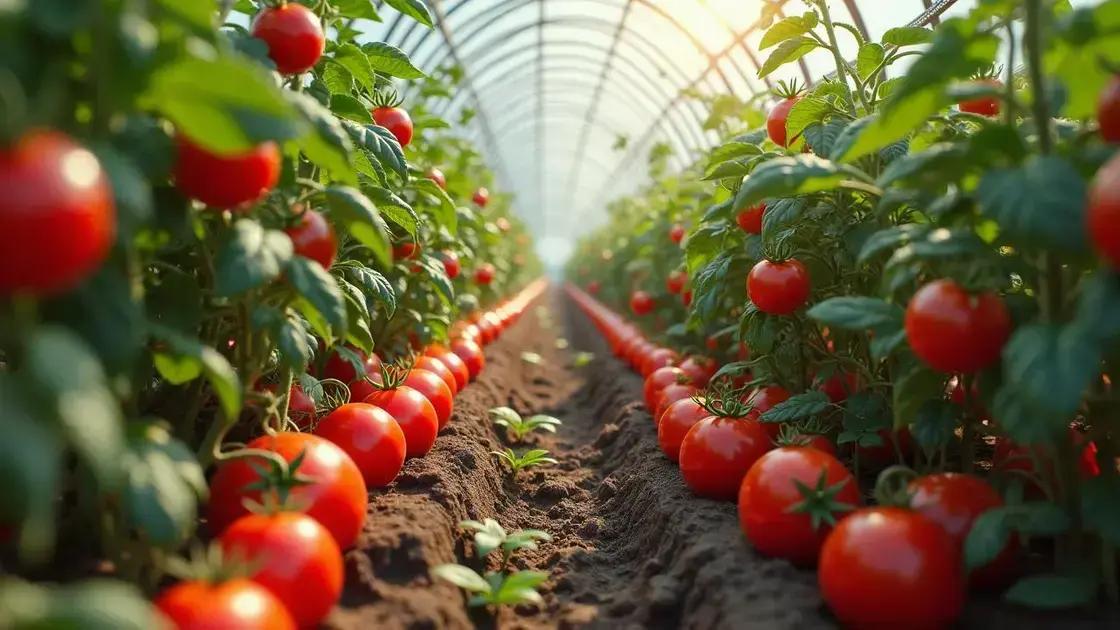How to Plant and Take Care of Tomatoes: 7 Essential Tips for Success
How to plant and take care of tomatoes can transform your gardening experience, leading to a thriving yield. Mastering the basics, like soil preparation and light requirements, sets the stage for a fruitful harvest. Join us as we explore vital tips to enhance your tomato cultivation journey.
Table of Contents
ToggleUnderstanding soil requirements for tomato plants
Understanding soil requirements for tomato plants is crucial to achieving a thriving garden. The right soil composition not only provides essential nutrients but also ensures proper drainage and moisture retention. Here’s how to optimize the soil for your tomato plants.
Choosing the right soil type
- Choose loamy soil that balances drainage and moisture retention.
- Avoid heavy clay soils, as they can impede root growth.
- Consider planting tomatoes in raised beds or containers with quality potting mix.
Nutrient essentials
Tomatoes thrive in nutrient-rich soil. To achieve this, consider the following:
- Test your soil’s pH; it should range between 6.0 and 6.8 for optimal growth.
- Add organic matter, like compost or well-rotted manure, to enrich the soil.
- Incorporate slow-release fertilizers, particularly high in phosphorus, to support flowering and fruit development.
Soil structure importance
A well-structured soil enhances air circulation and water movement, which are vital for healthy root development:
- Amend your soil with perlite or vermiculite to improve aeration and drainage.
- Mix in organic materials to aid water retention without causing compacting.
Practical example
For a practical illustration, many gardeners experience success by adopting a planting mix of 60% screened topsoil, 30% compost, and 10% perlite when growing tomatoes in containers. This combination not only provides essential nutrients but also allows roots to breathe easily.
Conclusion
By understanding soil requirements for tomato plants, you’ll lay the foundation for a successful gardening experience. Discover more about exploring indoor gardening techniques to enhance your skills further!
Establishing the perfect watering schedule

Establishing the perfect watering schedule is essential for the health of your tomato plants. Proper hydration supports root development and overall plant vigor, making it crucial to understand how much and when to water effectively.
Understanding tomato plant watering needs
- Tomato plants require approximately 1-2 inches of water per week, depending on soil type and weather conditions.
- Consistent moisture is key; fluctuations can lead to blossom drop or cracking fruit.
- Watering early in the morning is ideal to reduce evaporation and fungal growth.
Signs of under or overwatering
Recognizing the signs of improper watering helps you adjust your schedule:
- Yellowing leaves often indicate overwatering, while drooping leaves point to underwatering.
- Cracks in the fruit can result from inconsistent watering practices.
Creating your watering schedule
Your watering schedule should adapt to changing conditions. Here’s how to establish one:
- Check soil moisture by sticking your finger 1-2 inches into the soil; water if it’s dry.
- Adjust frequency based on heat and rainfall; increase watering during hot spells.
- Consider using drip irrigation systems for efficient, sustained watering.
Example watering schedule
A practical example of a weekly watering schedule for tomatoes might look like this:
| Day | Watering Amount |
|---|---|
| Monday | 1 inch |
| Thursday | 1 inch |
By effectively establishing the perfect watering schedule for your tomato plants, you can significantly enhance their growth and fruit production. For further insights on related topics, explore exploring indoor gardening techniques to boost your gardening skills!
Essential sunlight exposure for thriving tomatoes
Essential sunlight exposure for thriving tomatoes is crucial for their growth and fruit production. Tomato plants are sun-loving and require adequate sunlight to produce healthy fruit. Understanding their sunlight needs will help you cultivate a productive garden.
Optimal sunlight requirements
- Tomatoes need at least 6 to 8 hours of direct sunlight each day for optimal growth.
- Morning sunlight is particularly beneficial, helping to dry dew and reduce the risk of fungal diseases.
Identifying ideal planting locations
Choosing the right spot for your tomato plants enhances their sunlight exposure:
- Plant tomatoes in south or west-facing areas to maximize sunlight capture.
- Avoid shaded locations near tall plants or structures, as these can hinder light access.
Adjusting for different conditions
In regions with extreme heat, balance the sunlight exposure with the following techniques:
- Provide lightweight shade cloth during the hottest part of the day to prevent sunscald.
- Ensure sufficient air circulation to maintain plant health.
Real-world examples
Many gardeners find success by planting their tomatoes in raised beds that receive full sun exposure. Additionally, rotating tomato crops yearly helps prevent light deficiency, as plants that thrive in various sunlight conditions can be alternated effectively.
By understanding essential sunlight exposure for thriving tomatoes, you can foster healthy plants and increase your harvest. For more effective gardening tips, consider exploring indoor gardening techniques to enrich your gardening knowledge!
In conclusion
Taking care of tomatoes requires a balance of proper soil, watering schedules, and sunlight exposure to ensure healthy growth and fruitful harvesting. By understanding these essential factors, you can create a nurturing environment for your tomato plants, leading to a bountiful yield. As you continue to enhance your gardening skills, consider exploring tips on enhancing your indoor garden for even more gardening inspiration!

